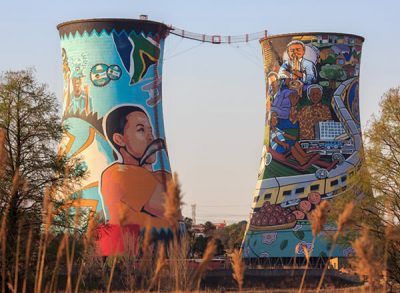The JPC is mandated by the CoJ as the “Sole Agent” tasked with managing and concluding leases on its behalf for the purposes of outdoor advertising and cell masts in terms of applicable policies and regulations such as the CoJ Supply Chain Management Policy for Land (SCMPL) and the Municipal Finance Management Act (MFMA) and any applicable law. The JPC manages, monitors and evaluates these lease agreements in compliance with applicable law.
 All forms of outdoor advertising on all land in the city is regulated by the CoJ Department of Development Planning (DDP) which is responsible for the application of the provisions of the CoJ Outdoor Advertising By-laws and any other law or policy, which includes the assessment of applications, enforcement and dealing with illegal signs.
All forms of outdoor advertising on all land in the city is regulated by the CoJ Department of Development Planning (DDP) which is responsible for the application of the provisions of the CoJ Outdoor Advertising By-laws and any other law or policy, which includes the assessment of applications, enforcement and dealing with illegal signs.
The JPC’s Outdoor Advertising Department is therefore responsible for the management of various forms of “out of home” advertising comprising of about 720 billboards, 3 800 on-premises signs, 30 000 various forms of street furniture (transport shelters, street and suburban names, etc.), street pole advertisements and about 130 various cellular mast sites and antennae erected on CoJ-owned land and/or assets. JPC also manages on behalf of the City, about 26 formal taxi rank facilities which provide areas for advertisements.
The Outdoor Advertising strategy was approved by the JPC Board in May 2015.
Salient features of the strategy:
- Less outdoor advertisements creates more value and reduces clutter;
- Development of Sign Management Plan (SMP); and
- SMP is a City-wide tool which identifies:
- Prohibited Zones: Areas where third party or commercial advertising is not allowed with controlled/limited advertisements on-street furniture installations where required and street poles and on-premises signs required by businesses.
- Minimum Control Areas: All forms of third party advertisements (On Class 1 Roads/highways to a maximum of 120 square meters in extent is permissible).
- Maximum Control Areas: No billboards, only street furniture and on-premises signs allowed.
- Partial Control Areas: All forms of third party advertising including on-street furniture are allowed (Class 2 and lower, order road sizes only up to 40 square metres in extent).
- Street Pole Zones: Areas earmarked for street pole advertisement only on Median (centre of the roads). Not permitted on highways.
- Media Development Zones include, but are not limited to:
- Nodes: Areas in which innovation will be encouraged with a preference at street level for Street Furniture Advertising and no billboards and the separation of formats, as well as larger Outdoor Advertising formats (such as Times Square in the US) on abutting private buildings, that is, Sandton CBD, JHB CBD (Ghandi Square and Newtown), Randburg, Rosebank and Fourways CBD;
- Some nodes have a core in which further intensification is encouraged with additional support for digitalisation of all sign types. Transportation terminals and similar precincts are also considered nodes. Each node requires an SMP or precinct plan and its own unique rules to be developed;
- Special Zones: Isolated parcels of land, developed and undeveloped, other than road reserves, suitable for outdoor advertising; and
- Gateway Sites: Areas designated for signs on bridges (exact locations as per the SMP) and/or custom built structures (approximate locations as per the SMP).
JPC is mandated to enter into lease agreements with advertising entities that have been approved by the CoJ for sites that belong to the city. At the expiration of the period of the lease, the site is put out on public tender again. This ensures that no monopoly on council-owned advertising sites exists.
